The ocean, a vast and interconnected body of water, covers over 70% of our planet. While we often learn about the Pacific, Atlantic, Indian, and Arctic Oceans, there’s a fifth ocean that plays a crucial role in Earth’s systems: the Southern Ocean. But Where Is The Southern Ocean, and why is it so important? Let’s dive into the icy depths and discover this unique and vital part of our global ocean.
Defining the Southern Ocean: Location and Boundaries
Unlike the other oceans defined by the landmasses that surround them, the Southern Ocean is unique because it’s defined by a current. It’s the only ocean that completely encircles the globe, flowing uninterrupted around Antarctica. This defining feature is the Antarctic Circumpolar Current (ACC), the strongest ocean current on Earth.
So, geographically, the Southern Ocean surrounds Antarctica. Its northern boundary isn’t a landmass, but rather a gradual transition zone where cold, polar waters meet warmer, sub-Antarctic waters. This zone is known as the Antarctic Convergence, or Polar Front. Think of it as a blurry line circling the Antarctic continent, roughly situated between 45 and 60 degrees south latitude. North of this convergence, you’ll find the southern reaches of the Atlantic, Indian, and Pacific Oceans. South of it, you enter the distinct realm of the Southern Ocean.
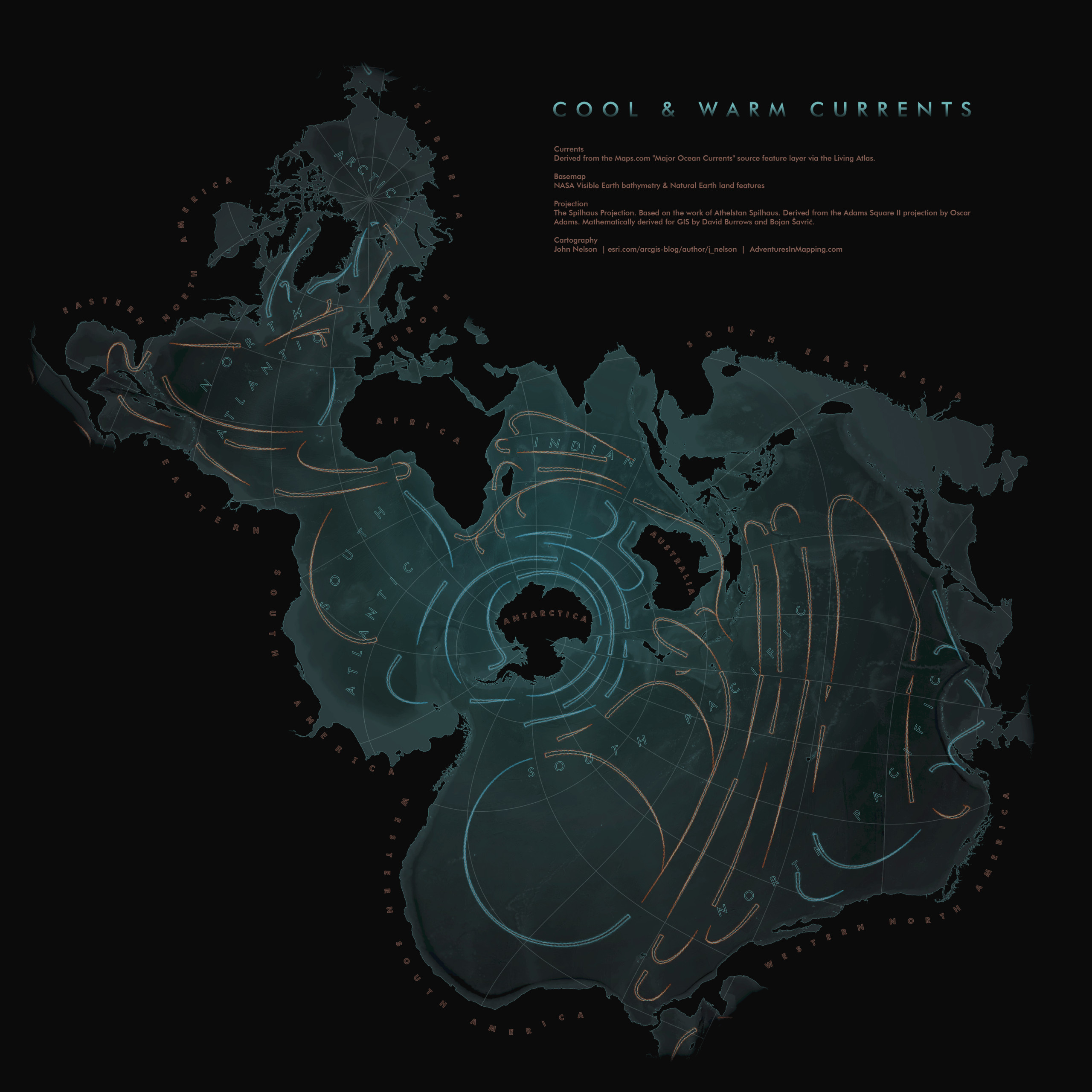 Spilhaus map of cool and warm currents
Spilhaus map of cool and warm currents
The concept of the Southern Ocean as a distinct ocean is relatively recent. For many years, it was considered simply the southern parts of the other major oceans. However, in 2000, the International Hydrographic Organization officially recognized the Southern Ocean as the fifth world ocean, acknowledging its unique characteristics and ecological significance.
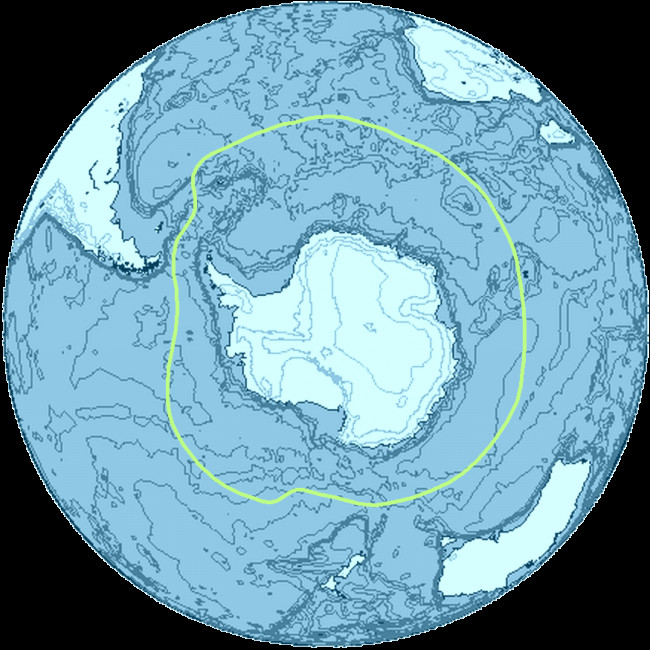 Southern ocean boundaries map
Southern ocean boundaries map
Map showing the boundaries of the Southern Ocean, highlighting its circumpolar nature and relationship to other major oceans.
Key Characteristics of the Southern Ocean
The Southern Ocean is more than just cold water around Antarctica. It boasts a unique set of characteristics that make it a critical player in global systems.
Temperature and Depth
The Southern Ocean is the coldest ocean, with temperatures ranging from around 50°F (10°C) to a frigid 28°F (-2.2°C), the freezing point of seawater. Sea ice is a dominant feature, expanding dramatically in winter and shrinking in summer.
In terms of depth, the Southern Ocean is generally deep, with an average depth of approximately 11,000 feet (3,000 meters). Its deepest point plunges to a staggering 23,740 feet (7,236 meters) in the South Sandwich Trench. These depths and cold temperatures contribute to unique water properties and circulation patterns.
The Antarctic Circumpolar Current (ACC)
As mentioned earlier, the ACC is the defining feature of the Southern Ocean. This massive current flows eastward around Antarctica, driven by powerful westerly winds. It’s the strongest and longest ocean current on Earth, transporting an immense volume of water – more than any other ocean current. The ACC plays a vital role in global ocean circulation, connecting the major ocean basins and distributing heat, nutrients, and carbon around the planet.
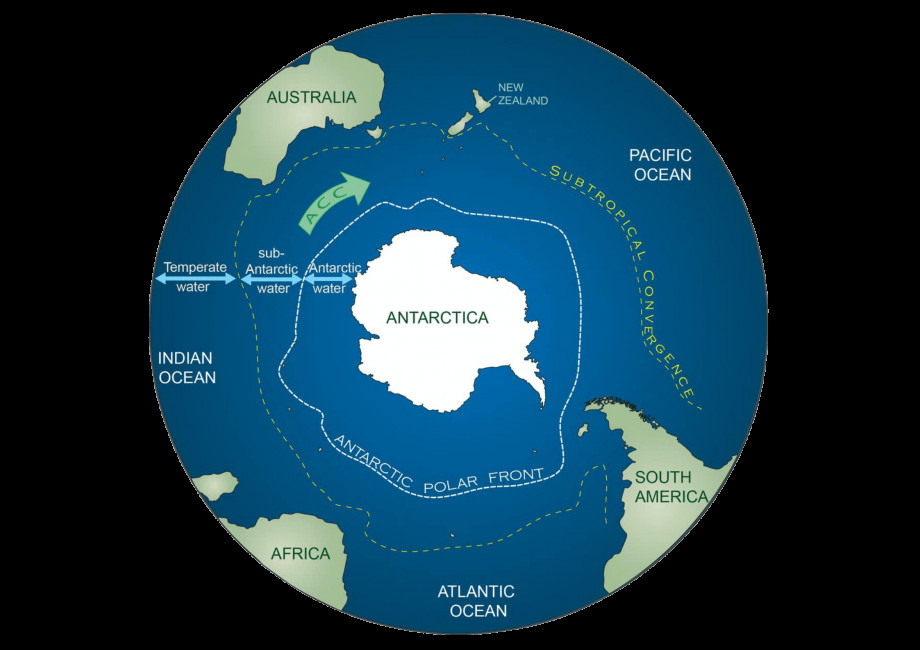 Antarctic circumpolar current
Antarctic circumpolar current
Illustration of the Antarctic Circumpolar Current flowing around Antarctica, emphasizing its global reach and significance.
A Crucial Climate Regulator
The Southern Ocean is a major regulator of Earth’s climate. It acts as a significant carbon sink, absorbing vast amounts of carbon dioxide from the atmosphere. This absorption helps to mitigate climate change by reducing the concentration of greenhouse gases. The cold waters of the Southern Ocean can hold more dissolved gases, including CO2, than warmer waters.
Furthermore, the Southern Ocean plays a key role in heat regulation. It absorbs a significant amount of heat from the atmosphere and redistributes it around the globe through ocean currents. This process helps to moderate global temperatures and weather patterns.
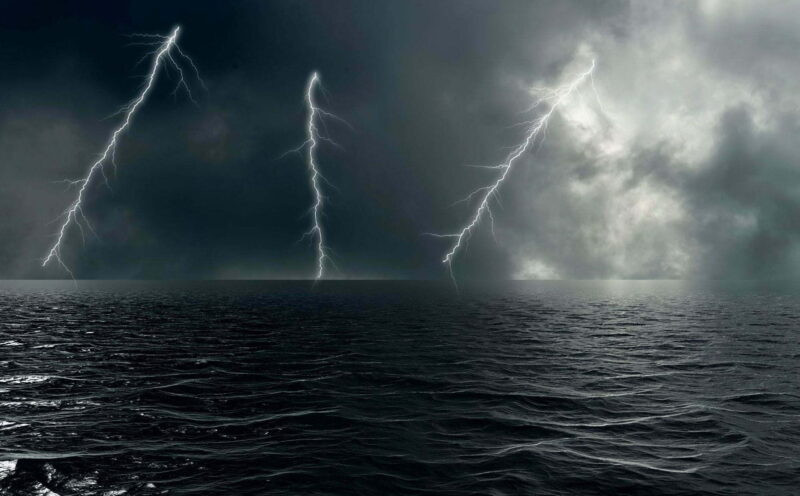 stormy sea
stormy sea
Image depicting the stormy conditions often found in the Southern Ocean, highlighting the powerful forces at play in this region.
Why the Southern Ocean Matters
Beyond its geographical location and unique characteristics, the Southern Ocean is critically important for several reasons:
Abundant and Unique Ecosystems
Despite its harsh conditions, the Southern Ocean is teeming with life. It’s one of the most productive marine ecosystems on Earth, supporting a vast web of life from microscopic phytoplankton to colossal whales.
Phytoplankton blooms in the Southern Ocean are immense, fueled by nutrient-rich waters brought to the surface by upwelling. These tiny marine plants form the base of the food web, supporting Antarctic krill, small shrimp-like crustaceans that are a keystone species. Krill are the primary food source for penguins, seals, whales, seabirds, and many fish species.
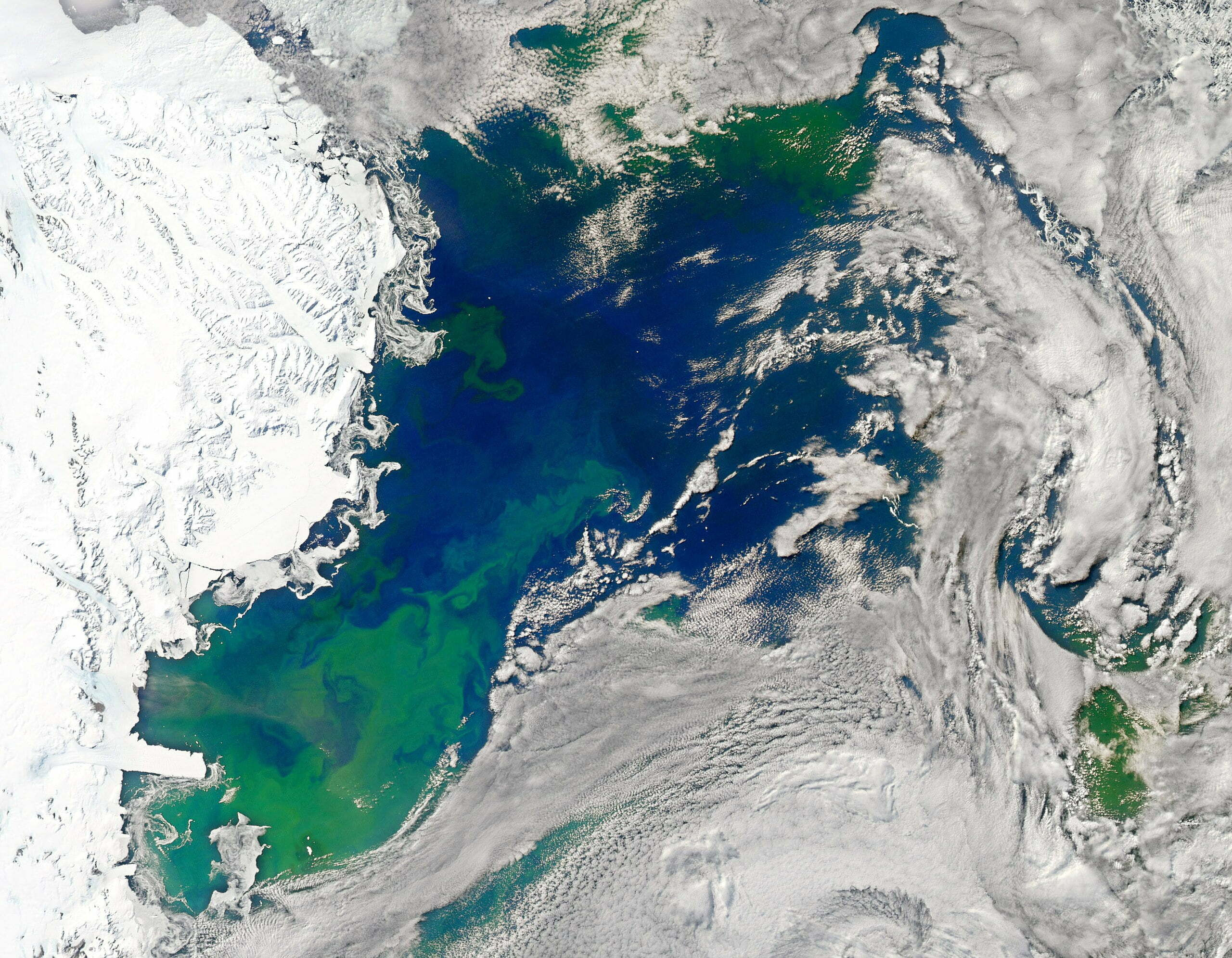 Phytoplankton bloom in Ross Sea_NASA Goddard
Phytoplankton bloom in Ross Sea_NASA Goddard
Satellite image showing a large phytoplankton bloom in the Ross Sea, Southern Ocean, illustrating the region’s biological productivity.
The Southern Ocean is home to iconic Antarctic wildlife, including various species of penguins, such as Emperors and Adelies, seals like Weddell and crabeater seals, and magnificent whales, including humpback, minke, and blue whales. Albatrosses and petrels are among the many seabirds that rely on the Southern Ocean’s rich resources.
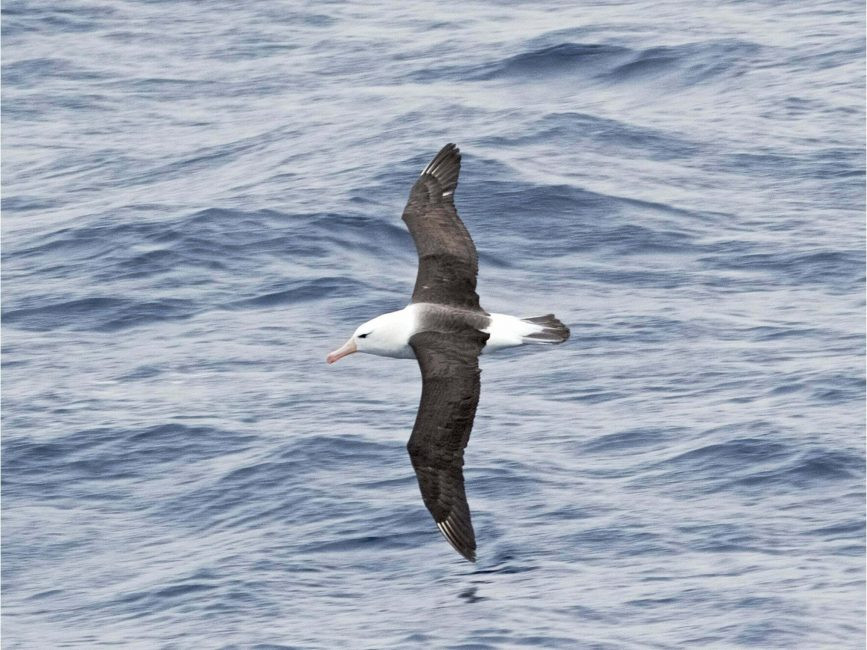 Albatross
Albatross
A majestic Albatross in flight over the Southern Ocean, representing the diverse and unique birdlife of the region.
Global Ocean Circulation and Climate
As we’ve discussed, the Southern Ocean and the ACC are integral to global ocean circulation and climate regulation. Changes in the Southern Ocean, such as warming temperatures, melting sea ice, and ocean acidification, have far-reaching consequences for the entire planet. These changes can impact weather patterns, sea levels, and marine ecosystems worldwide.
Conclusion: Protecting the Fifth Ocean
So, where is the Southern Ocean? It’s the frigid, dynamic ocean encircling Antarctica, defined by the Antarctic Circumpolar Current and the Antarctic Convergence. It’s a region of extremes, playing a vital role in global climate and supporting unique and abundant ecosystems.
Understanding the Southern Ocean and its importance is crucial for addressing global environmental challenges. Protecting this fifth ocean means protecting a critical component of Earth’s life support system. As we learn more about this fascinating and remote part of our planet, it becomes increasingly clear that the Southern Ocean is not just “somewhere down south,” but a vital ocean for us all.
To delve deeper into the wonders of the Southern Ocean and learn about conservation efforts, explore resources from organizations like the Antarctic and Southern Ocean Coalition (ASOC) and the Commission for the Conservation of Antarctic Marine Living Resources (CCAMLR).
A Humpback whale breaching in the Southern Ocean, a symbol of the magnificent marine life that depends on this unique environment.

